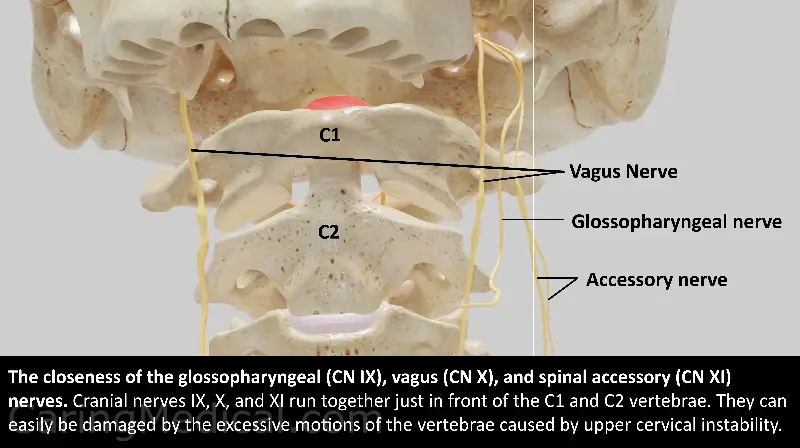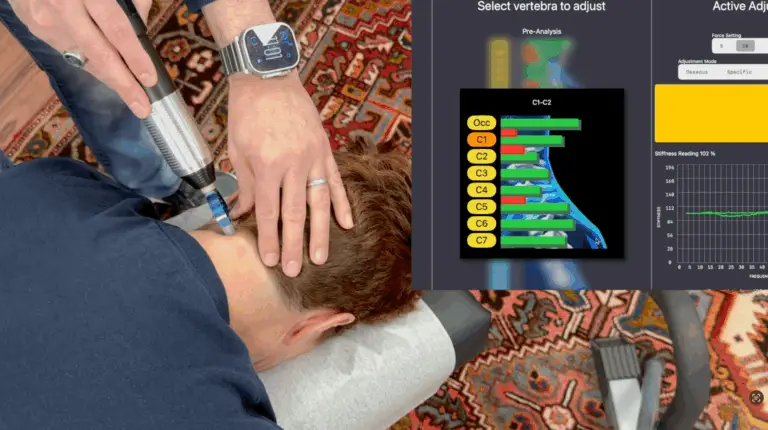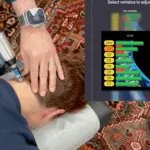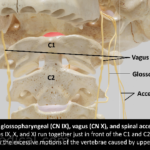In the ever-evolving landscape of chiropractic care, the PulStar emerges as a transformative force, not only providing relief from musculoskeletal ailments but also influencing the autonomic nervous system, particularly the vagus nerve. Often referred to as the “wandering nerve,” the vagus nerve plays a pivotal role in parasympathetic regulation, facilitating a state of calmness, reducing inflammation, enhancing digestion, and supporting overall emotional well-being. Stimulating this nerve non-invasively has been a central focus of both conventional and cutting-edge therapies, and the PulStar equips chiropractors with a unique tool to achieve this goal.
The PulStar Approach to Influencing the Vagal Nerve
Unlike manual adjustments, the PulStar delivers rapid, low-force mechanical impulses to targeted spinal segments. These impulses, delivered by a handheld device connected to sophisticated analysis software, are precisely measured and applied. The stimulation is subtle, yet powerful—offering a level of precision that manual techniques can’t match.
But how does this connect to vagus nerve stimulation?
The vagus nerve interfaces closely with structures in the upper cervical spine—particularly around the atlas (C1) and axis (C2) vertebrae. Stiffness or subluxations in this region may impinge neural flow or affect parasympathetic balance. PulStar’s ability to analyze spinal stiffness and deliver controlled impulses directly to these segments makes it an ideal instrument for gentle, repeated stimulation in this key region.
Frequency & Stimulation Parameters
Research demonstrates that the PulStar delivers impulses with a thrust duration of under 10 milliseconds and peak forces ranging from 22.2 to 155.7 Newtons, depending on settings. These impulses cause temporary reductions in paraspinal muscle spindle discharge, followed by a prolonged period (up to 6+ seconds) before baseline activity resumes. This prolonged neuromodulatory effect is a promising indicator of deeper autonomic involvement, such as vagal tone enhancement.
Specifically, studies like the one by Reed et al. (2017) show that this neuromodulatory pattern may mirror responses found in known vagal stimulation techniques, where frequency and duration of mechanical input matter significantly.
The PulStar is set up to deliver multiple impulses in a short burst at frequencies between 4 to 90 Hz, which interestingly overlaps with the range used in some transcutaneous vagal nerve stimulation (tVNS) devices.
This frequency range is not arbitrary. The 4–8 Hz band aligns with theta brainwaves and autonomic resonance frequencies known to modulate vagal tone—suggesting that the PulStar’s mechanical impulses may produce more than local effects—they may foster systemic parasympathetic shifts.
Clinical Evidence Supporting Neurological Impact
A 2015 clinical trial published in China Medicine demonstrated that PulStar therapy significantly outperformed traditional methods in reducing pain and improving recovery in lumbar strain cases. More relevant to vagus nerve applications, however, is the documented reduction in paraspinal muscle tone and electromyographic activity following PulStar therapy in the cervical region. Reducing paraspinal muscle tension near the cranial-cervical junction is one pathway to alleviating pressure on or around the vagus nerve.
Furthermore, in a pilot study focused on cervical spondylosis, MIT showed superior results over traction alone—highlighting the effectiveness of precise, repeated stimulation in the neck region for functional recovery.
Where to Apply for Vagal Activation
For chiropractors aiming to engage the vagus nerve, targeted application to the upper cervical spine—particularly at C1/C2—should be a primary focus. These segments lie closest to the brainstem exit points of the vagus nerve. Using PulStar’s stiffness analysis, practitioners can identify restrictions and deliver impulses where indicated.
Therapy in this region should start at the lowest force setting (22.2 N) and be monitored closely. Because the vagus nerve plays a role in heart rate, respiration, and digestion, patients often report noticeable systemic effects: improved mood, deeper breathing, or a calming sensation after treatment.
Conclusion: Precision Meets Parasympathetic Power
The PulStar isn’t just about treating back pain—it’s about precision neuromodulation. By using frequencies in the 4–90 Hz range and targeting the upper cervical spine, chiropractors can leverage PulStar’s unique mechanical stimulation to influence one of the body’s most vital regulatory nerves.
Vagus nerve stimulation through MIT is non-invasive, comfortable, and grounded in both technology and physiology—a true integration of chiropractic principles and modern science.











